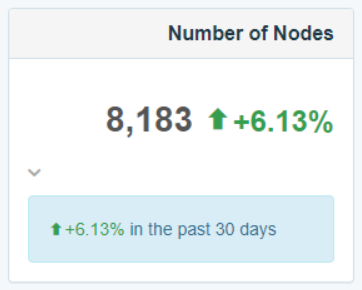We have some cool names in the cryptocurrency space: DASH, Ether, Cardano, and Ripple to name a few. When Joseph Poon and Thaddeus Drja published their seminal whitepaper in 2016, they topped them all and claimed the coolest name in the industry: The Lightning Network.
No, this isn’t a new Marvel Movie (watch Endgame spoilers here), but instead, it’s the best solution to Bitcoin’s oldest problem: scalability. In fact, you can read the old BitcoinTalk threads from 2010, in which Jeff Garzik and others call it “a key future bottleneck of the current Bitcoin system.”
The problem has been obvious for a while. The Bitcoin whitepaper clearly stipulates that new blocks are only generated every 10 minutes and the block size is limited. Yes, measures like SegWit have offered a step in the right direction but the Bitcoin network still only processes around 4 transactions per second – far too few to enable significant adoption.
This is why the Lightning Network has captured the imagination of the crypto community. It represents the best shot we have at achieving meaningful scalability.
What is the Lightning Network?
As implied in the introduction, the Lightning Network (LN) is a scalability solution for Bitcoin. Importantly it moves transactions off-chain and allows a network of participants to conduct high-velocity payments.
More specifically, the Lightning Network allows participants to set up payment channels, through which transactions can be sent almost instantaneously and at negligible fees. In theory, this should allow for millions of transaction per second – far more than the capacity of any payments system around today.
Excitingly, the Lightning Network is far more than just an idea. As of April 2019, it has enjoyed significant growth, now including thousands of nodes and impressive transaction capacity. Here are a few statistics:
- Number of nodes: 8,180
- Number of payment channels: 38,300
- Network capacity: 1,056 BTC (around $5.4 million)
- Median base fee: 1 SAT ($0.000053079)
With these impressive numbers in mind, it’s easy to see why people are getting excited. The Lightning Network could feasibly enable Bitcoin’s grand vision: to be used as real-world digital cash.
Let’s now take a look at this promise.
How does the Lightning Network function?
As with all innovation in the cryptocurrency space, there are different levels of analysis when it comes to the Lightning Network. For a deep, technical explanation I urge you to check out their documentation. Here we will provide a brief, high level overview.
Off-Chain Payment Channels
The basic idea behind the Lightning Network is that many transactions are only important to the direct participants. If you send your friend 0.001BTC to play around with Bitcoin, does my node really need to know? Is it right to expend energy, and bandwidth to settle this transaction on-chain? No, it’s not.
Instead, Lightning suggests that it is optimal to have the bare minimum of information on the Bitcoin blockchain. As a result, the key to understanding how the LN works is the term “off-chain” and it’s worth discussing it in a little more detail.
When we use this term, we are typically referring to transactions which are conducted without being broadcast, verified and added to the blockchain in real-time.
The Bitcoin blockchain only generates blocks every ten minutes and processes transactions in a linear fashion. This makes it slow and causes the scalability issues Lightning tackles.
By taking transactions off-chain, we circumvent the problems inherent in Bitcoin. The question then is: how do you enable and reconcile transactions off-chain?
Well, there are a number of options, but the most promising – used by LN – is payment channels. These allow peer-to-peer transactions between trusted participants through the use of Hashed Timelock Contracts (HTLCs). An HTLC is essentially a multisig address that two parties can send funds to, and requires the signature of both parties to spend the funds.
In overly simplistic terms, you can imagine a spreadsheet which is used by two participants. If one of the participants reduces the balance on one side, the balance on the other side will increase correspondingly. The overall balance can be adjusted infinitely without ever having to trouble the blockchain.
Once both parties are happy and want to conclude the transaction, they can both sign an exit transaction which is broadcast to the network and both parties receive their agreed-upon funds.
Why is it the Lightning “Network”?
One of the great advantages of the Lightning Network is that it does not require a new payment channel for each new transaction. Instead, a sophisticated routing protocol allows participants to find transaction routes through the network.
As an example, imagine that you want to send me some BTC. We don’t have a payment channel, but we both happen to have one with Bob. You can use the network to send the transaction as long as the open payment channel contains enough balance.
This is made possible by the network nodes which are incentivized by small fees paid by the users. In order to become a node on the Lightning Network, you need to run a full Bitcoin node. Make sure to check out our guide to get started.

Why could the Lightning Network fail?
So far we have discussed how the LN works and how it ostensibly manages to solve Bitcoin’s scalability issues. Importantly, plenty of skeptics remain, and some valid criticisms are being leveled at the innovative solution.
The most important of which focuses on the risk of censorship. Bitcoin was designed as a trustless and censorship-resistant digital cash. The LN on the other hand seemingly encourages centralization in payment hubs and is subsequently open to censorship.
Roger Ver, famous investor and co-founder of the Bitcoin Foundation, is one of the most vocal critics of LN, tweeting:
The #LightningNetwork enables financial censorship, the exact thing Bitcoin was designed to prevent. https://t.co/pnXd8LeDwP
— Roger Ver (@rogerkver) February 19, 2018
Interestingly, this tweet confuses the nature of the Lightning Network. In fact, LN is censorship resistant, and Ver is instead referring to the refusal of network members to connect with him. This is not censorship as there is no central power actively stifling nodes. Instead, individual network members have the power to interact with – and avoid – any network member they wish to.
This feeds into another argument against LN, which is that it results in centralized hubs. Although this argument might be correct in principle, this is not necessarily contrary to Bitcoin’s underlying philosophy and does not pose an immediate threat. Instead, it is still possible to have a decentralized network containing centralized hubs.
A slightly weaker argument against the Lightning Network is that it can only process online payments. Although this is true, it’s hard to take this argument too seriously. In an increasingly digital world, the prerequisite of being online is hardly a deal breaker.
How can Bitcoin achieve meaningful scale?
The impact of the Lightning Network will depend in large part on the feasibility of alternatives. Due to Bitcoin’s limited nature, the number of options are limited. These are:
- Allow corporations to take over – The vast majority of crypto is already stored and transferred among cryptocurrency exchanges like Coinbase and Binance. Sending one BTC from one Binance account to another, for example, can be done instantly and could be done at scale. That being said, this approach completely undermines Bitcoin’s value, and we could instead just use fiat.
- Use secondary layer solutions – The Lightning Network is the strongest example of an off-chain secondary layer that operates on top of Bitcoin. LN has already shown that it can handle large volumes of transactions. It doesn’t rely on a profit-driven corporation and may well be the best option.
- Increase the block size – The larger the block size the more transactions could theoretically be processed. One significant problem with this approach is that larger blocks require more disc space, and the Bitcoin blockchain would soon explode in size. Private nodes and miners would be forced out of the network, paving the way for strong centralization.
Conclusion
With these three possible solutions in mind, it seems clear that a scalable secondary layer solution is the best way to go for Bitcoin. The Lightning Network is a protocol for the exchange of digital assets and, unlike the alternatives, will not lead to drastic centralization.
Of course, there are criticisms but we’ve explained why many of them are invalid. Unless a new technology emerges, or Bitcoin changes drastically, the Lightning Network is Bitcoin’s best chance at reaching meaningful scale, and will, therefore, have a huge positive impact on Bitcoin.





Leave a Reply